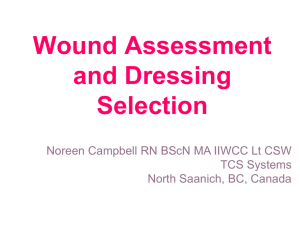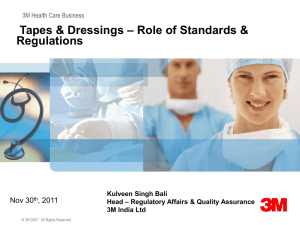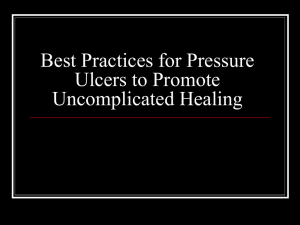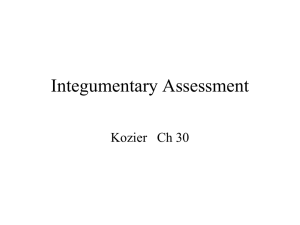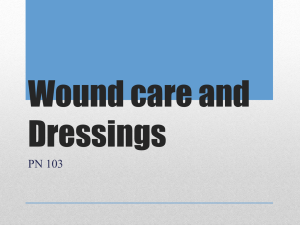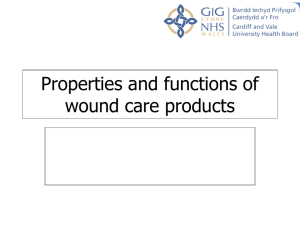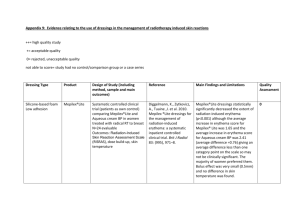Wound Care: Dressings and Their Uses
advertisement
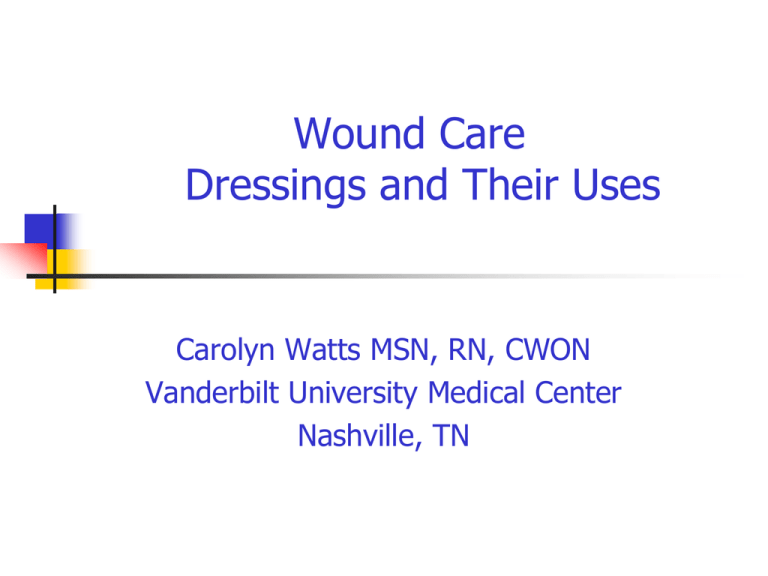
Wound Care Dressings and Their Uses Carolyn Watts MSN, RN, CWON Vanderbilt University Medical Center Nashville, TN Topical Therapy: Principles Remove necrotic tissue and foreign bodies or particles Identify and eliminate infection Obliterate dead space Absorb excess exudate Maintain a moist wound surface Provide thermal insulation Protect the healing wound from trauma and bacterial invasion Doughty, Acute and Chronic Wounds, 1992 Wound Care Product Selection Wounds are dynamic and will require different approaches during healing process Continually reassess patient and wound Topical therapy is one part of the nurses role - must eliminate cause and support host Continually educate self on products to make informed choices Wound Care Product Selection: Other Considerations Frequency of change Ease or difficulty of procedure Care giver Availability of products Cost or reimbursement factors Wound Care Product Selection: Other Considerations Is wound partial or full thickness? Is wound dry or draining? Is wound superficial or deep? Need to develop treatment protocols based on wound characteristics rather than wound type. Types of Topical Wound Dressings Hydrocolloid dressings Hydrogel dressings Alginate dressings Hydrofiber dressings Transparent film dressings Foam dressings Absorption dressings Gauze dressings Composite dressings Biologic dressings Other Hydrocolloid Dressings Hydrocolloid Dressings Made up of pectin based wafer material Absorb minimal to moderate exudate Occlusive – should not be used on infected wounds Come in various shapes and sizes Should not be used if you need to change more than q 2-3 days Hydrogel Dressings Hydrogel Dressings Made up of primarily water in a polymer to maintain moist wound base Come in amorphous or sheet formulations Should be used in dry wounds Should not be used in more than minimally exudating wounds Should not be used with an absorbant dressing, e.g. hydrocolloid, foam, etc. Hydrogel Sheet Dressing Hydrogel Amorphous Dressing Alginate Dressings – With or Without Silver Alginate Dressings Made up of seaweed from the North Sea Absorb moderate amounts of drainage Dry formulation, that becomes a gel when it comes into contact with wound fluid through Calcium/Sodium ion exchange Should not be used with hydrogels Hydrofiber Dressings Work the same as alginates but absorb ~ 30 % more exudate. Use with caution in mildly draining wounds. Foam Dressings Made up of polyurethane foam Absorbs moderate to large amounts of drainage Available in various sizes and shapes Some types my macerate periwound skin if it allows drainage to wick laterally Foam Dressings Silicone Backed Foams Allevyn Gentle Border Mepilex Border Absorbent Dressings Frequently made with “diaper” technology to absorb more drainage than traditional ABD pad Many are covered with non-adherent layer, e.g. ExuDry Absorbent Dressings Acrylic Absorbent Dressing Specialty Dressings Silver dressings – e.g. Acticoat Biologic Dressings – SIS (Oasis) Skin Substitutes – Appligraf/ Dermagraft Silver Dressings Antimicrobial to reduce bioburden of wound through slow release of silver ion into the wound Biologic Dressings SIS (Sterile intestinal submucosa) Oasis Skin Substitutes Appligraf Dermagraft Specialty Products KCI Wound VAC
